- CDC
- Heart Failure
- Cardiovascular Clinical Consult
- Adult Immunization
- Hepatic Disease
- Rare Disorders
- Pediatric Immunization
- Implementing The Topcon Ocular Telehealth Platform
- Weight Management
- Screening
- Monkeypox
- Guidelines
- Men's Health
- Psychiatry
- Allergy
- Nutrition
- Women's Health
- Cardiology
- Substance Use
- Pediatrics
- Kidney Disease
- Genetics
- Complimentary & Alternative Medicine
- Dermatology
- Endocrinology
- Oral Medicine
- Otorhinolaryngologic Diseases
- Pain
- Gastrointestinal Disorders
- Geriatrics
- Infection
- Musculoskeletal Disorders
- Obesity
- Rheumatology
- Technology
- Cancer
- Nephrology
- Anemia
- Neurology
- Pulmonology
Five Ulcerated Lesions: Check Your IQ
Here are 5 photos of non-healing ulcers: can you make the diagnosis?
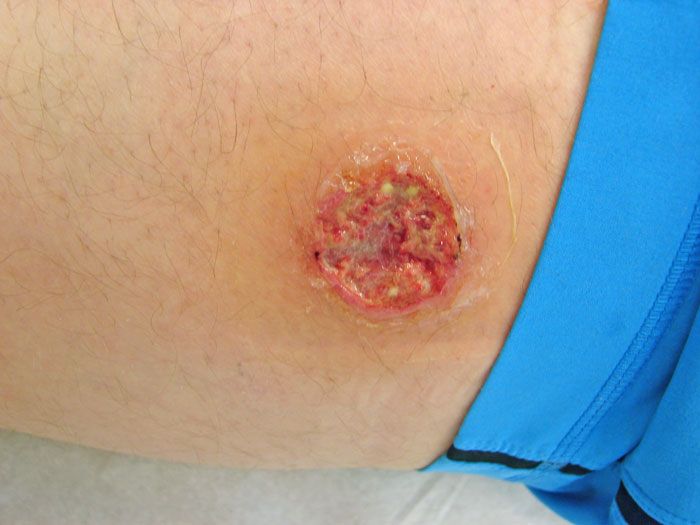
Question 1:
A 56-year-old woman with Crohn disease, clinical depression, and borderline diabetes mellitus noted the abrupt onset of several very painful ulcerations on her back.
NEXT QUESTION »
For the discussion, click here.
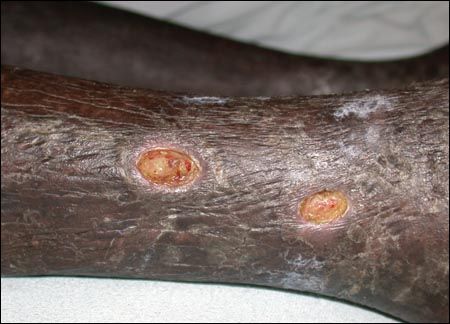
Question 2:
NEXT QUESTION »
For the discussion, click here.
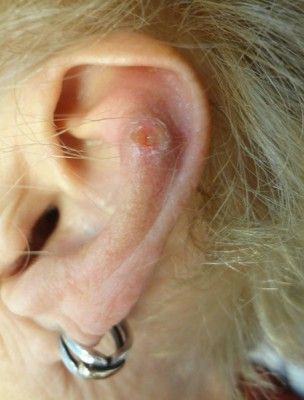
Question 3:
A 71-year-old woman had a 0.5-cm ulcerated and painful nodule on the superior pole of the antihelix of the left ear.
NEXT QUESTION »
For the discussion, click here.
For the answer, click here.
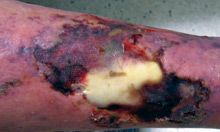
Question 4:
An 88-year-old man presents with a non-healing ulcer on his right leg. The lesions started insidiously as multiple red nodules that progressively became ulcerated and painful. Laboratory findings showed mildly elevated levels of parathyroid hormone, calcium, alkaline phosphatase, and inflammatory markers. His renal function tests showed moderate impairment. The patient has hypertension and takes warfarin for atrial fibrillation.
NEXT QUESTION »
For the discussion, click here.
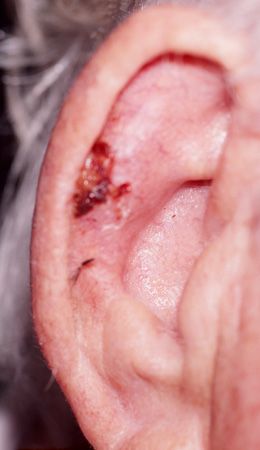
Question 5:
This rounded, 0.5-cm ulcerated lesion with a slightly raised border between the helix and the antihelix had been present on an 85-year-old man’s ear for an unknown period. It was asymptomatic except for some bleeding.
ANSWER KEY »
For the discussion, click here.
ANSWER KEY:
Question 1. B
Question 2. A
Question 3. C
Question 4. D
Question 5. A
